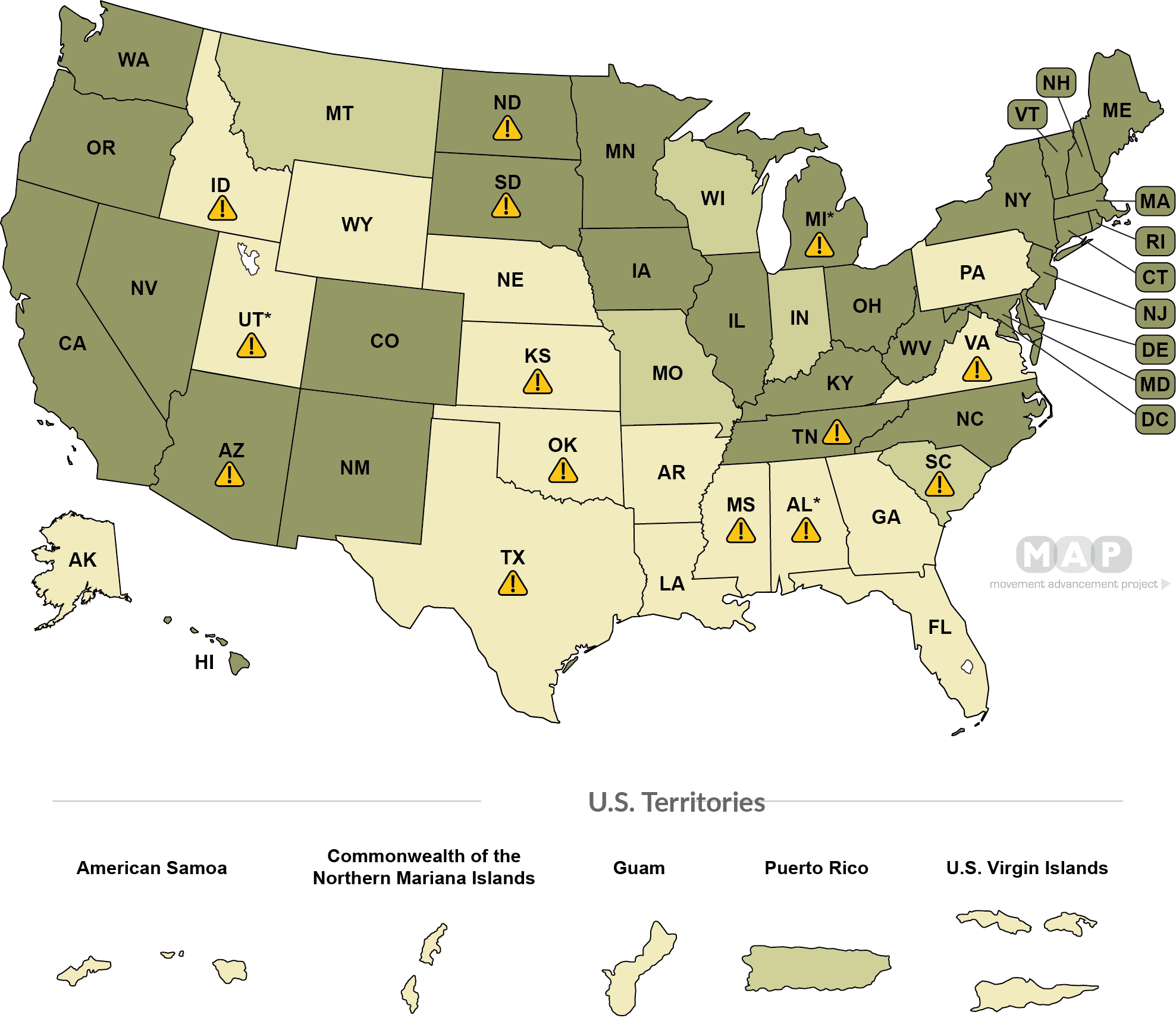State statute, regulation, and/or agency policy prohibits discrimination in foster care based on sexual orientation and gender identity (29 states + D.C.)
State statute, regulation, and/or agency policy prohibits discrimination in foster care based on sexual orientation only (5 states, 1 territory)
No explicit protections against discrimination in foster care based on sexual orientation or gender identity (16 states, 4 territories)

State permits state-licensed child welfare agencies to refuse to place and provide services to children and families, including LGBTQ people and same-sex couples, if doing so conflicts with their religious beliefs (14 states)
Percent of Adult LGBTQ Population Covered by Laws
*Note: These percentages reflect estimates of the LGBTQ adult population living in the 50 states and the District of Columbia. Estimates of the LGBTQ adult population in the five inhabited U.S. territories are not available, and so cannot be reflected here.
60 % of LGBTQ population lives in states which have statutes, regulations, and/or agency policies prohibiting discrimination in foster care based on sexual orientation and gender identity
9 % of LGBTQ population lives in states which have statutes, regulations, and/or agency policies prohibiting discrimination in foster care based on sexual orientation only
31 % of LGBTQ population lives in states which have no explicit protections against discrimination in foster care based on sexual orientation or gender identity
26 % of LGBTQ population lives in states permitting state-licensed child welfare agencies to refuse to place and provide services to children and families, including LGBTQ people and same-sex couples, if doing so conflicts with their religious beliefs



